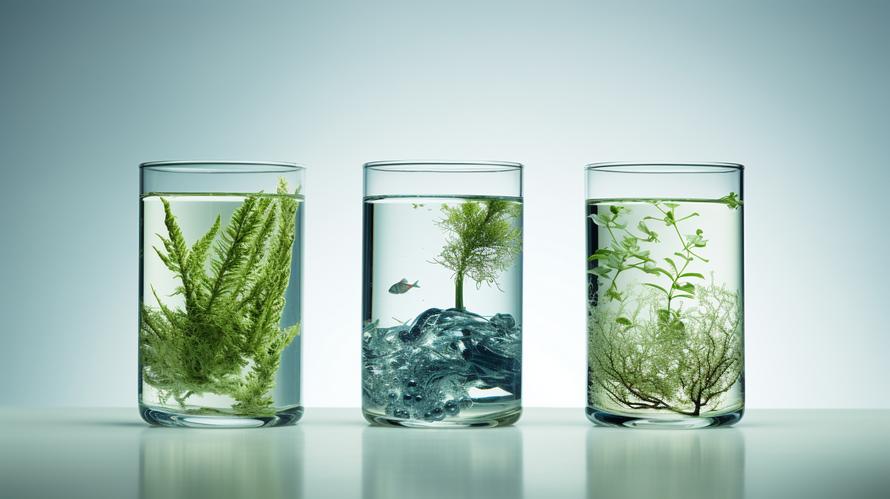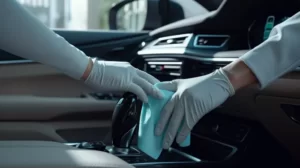Imagine this: every morning, as you groggily shuffle into your kitchen and reach for that faucet, you’re unwittingly becoming part of a vast chemical conspiracy. As water cascades into your glass, it ferries along a secret brew of contaminants, a cocktail mixed not just with life-giving H20 but with a myriad of hidden dangers lurking in your seemingly innocuous tap water.
Picture the last time you poured yourself a glass of tap water. It was probably clear, perhaps had no striking taste or odor, and you drank it without a second thought, right? However, what if science revealed truths about your bland beverage that would make your hair stand on end? Well, buckle up, because what you’re about to learn will have you second-guessing every sip.
First off, let’s bring Chlorine into the limelight. Introduced to the water supply to combat deadly cholera and typhoid outbreaks, Chlorine has been a saving grace in public health. But the plot thickens: it forms trihalomethanes (THMs) when it reacts with organic matter in the water – and these are linked to bladder cancer, among other health issues. Essentially, while Chlorine has been our water’s knight in shining armor, it has unwittingly brought some dragons along with it.
Then there’s Lead. No, not the character from an old-timey pencil, but a sneaky intruder in pipes across America. Even at very low levels, lead can wreak havoc on human health, causing serious neurological and developmental issues, particularly in children. It sneaks into our water from corroding pipes, coating our insides with a dangerous patina that no one asked for.
But wait, there’s more: Chlorinated by-products and Lead are just headliners in a whole ensemble cast of pollutants. Pesticides and herbicides run off from agriculture find their way into our glasses, potentially disrupting hormones and causing health problems. Then there’s Arsenic – a natural yet poisonous element that wells up into water supplies, virtually undetectable until it manifests as a serious threat to our health.
Pharmaceuticals, those life-saving miracles of modern medicine, also have a dark side. They pass through our bodies and sewage systems but remain uninvited guests in our tap water because most treatment facilities aren’t equipped to filter them out. Ramifications? We don’t fully know yet, and that’s perhaps the most troubling aspect.
Additionally, manufacturing plants are often the villains behind the presence of heavy metals and volatile organic compounds (VOCs) in our water. VOCs have a nasty reputation for causing cancer and wreaking havoc on our livers, kidneys, and nervous systems, yet they slip into our water supply with surprising ease.
Like a fiendish plot twist, even the pipes and plumbing systems designed to deliver water to our homes may contribute to the problem by leaching further contaminants into the water after it has been treated.
Now, I’m not here to paint doomsday pictures of apocalyptic water woes or to make you swear off water and subsist on bottled air. It’s the 21st century, and thankfully, we have more tools at our disposal than a medieval alchemist – we have science and technology.
To protect yourself and your family, awareness is the first line of defense. Get to know your water source and its potential contaminants by checking out the Environmental Working Group’s (EWG) comprehensive Tap Water Database online. Here, you can find out what’s been hiding in your local water supply just by entering your zip code.
Follow this by getting your tap water tested. Many companies offer affordable testing kits that can uncover a broad spectrum of chemical bandits. Knowledge is your ally – knowing what’s in your water means you can take the necessary steps to guard against it.
The next weapon in your arsenal is a high-quality water filter. Invest in one that can banish the specific contaminants identified in your water. These range from activated carbon filters that are typically effective for organic chemicals and Chlorine to more sophisticated reverse osmosis systems capable of dealing with a plethora of unwelcome substances.
Simple habit changes can also reduce your exposure. For instance, letting the tap run for a minute before using water can flush out Lead that may have accumulated in your home’s pipes. Also, using cold water for cooking and drinking is wise, as hot water is more likely to contain higher levels of Lead due to its ability to dissolve and leach materials from your pipes.
Advocacy is also a critical aspect. Get involved in local water quality initiatives and push for more stringent regulations and updates to aging infrastructure. Community action can lead to real changes in municipal water treatment practices.
And if you’re still feeling uneasy, consider aligning with local community support groups, because nothing spells safety quite like community support. These groups can offer advice, share resources, and amplify voices when it comes to demanding safer water practices.
In wrapping up, while you might feel as if you need a degree in environmental science just to take a drink of water these days, remember that knowledge and action go hand in hand. By staying informed and proactive, you can ensure that the only thing your glass of tap water is tainted with is a thirst for adventure.
So the next time you reach for that glass, remember the curious, invisible story that water tells. Just as you take care of the water, it will take care of you because, on this blue planet, water is life – and we ought to make sure every drop counts for health and well-being.



